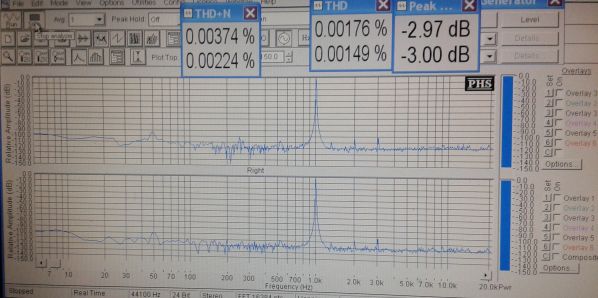That's not true, they are mostly due to easily measurable distortions. While it may be true there are some unknowns most of what you hear wrt coloration is cold, hard science and is easily measured and quantified.
Yes, you are right that a lot of it IS avaiable in measurments but how those are interpreted with regard to human psychological response is still an area where science is still catching up. Several researchers have looked into the psyhchoacoustics of distortions from electronics. One of the earlier ones was D.E.L. Shorter from the BBC. He came up with a metric where the weighting of importance of a given harmonic was the nsquared/4 where n is the harmonic order number.
Cheever later came up with his T.A.D (Total Aural Dissonance) and Geddes came up with the GedLee number.
The upshot of all of these attempts to quantify psychological preference all come to basically the same conclusion: High order harmonics are very destructive to realisitic reproduction of music...even at extremely low levels...levels that many claim are inaudible.
What Crowhurst found out was that the application of negative feedback contributes to the production of high order harmonics and in such a proliferation that the result is a signal modulate "noise" floor that also destroys realisitic reproduction.
Jena Hiraga came to the conclusion that the most natural distortion pattern in an amplifier was monotonic...an exponential decay from low order to high order harmonics.
Cheever found basically the same thing as the low order harmonics are largely masked by the ear/brains own distortion and tone masking. Howver, he went even further to determine that this is not a static thing and that the correct ratios of harmonics is actually SPL dependent, so the interaction of the amp and speaker therefore becomes important so that the amplifier is working in a range that gives the most correct harmonic pattern at a pleasant listening level.
Just to dispel the notion of euphonic distortions as claimed by the "neutral" crowd about tube and SET afficianados. There was an experiment published by Keith Howard in Stereophile where he added distortion to music files. He found that adding any distortion to the original file degraded the sound. This dispels the "Euphonic" claim that people say about high 2nd order harmonics etc. The important side point from this experiment is that he also found that the "Hiraga" monotonic pattern was the least offensive of the distortion patterns he explored.
So, where does that leave us? There are clear preferences for electronics which will minimize the most destructive harmonic distortion. It is no wonder to me that the Lampizator DAC has taken the audio world by storm...using the most linear amplification devices is a good way to get a more truly neutral reproduction with low and low order harmonic distortion (unlike an amp a line level tube amplifier can have very low distortion without any negative feedback and it will then be primarily low order harmonics as well). Most output stages of DACs are simply ruining the sound in the analog output stage.
I am a objectivist who has used the science that is out there to direct my subjective choices. I still ultimately decide by listening because even among gear that has more or less proper designing there are still plenty of audible differences that can lead to preferrence.
What I can clearly hear now as well though is how electronics that haven't taken psychoacoustics into account (most do not but get kind of "lucky" and do it more or less correctly) get it really wrong and it doesn't take long with careful listening to find out that is the case. It has reduced my "mistake" buying drastically.







